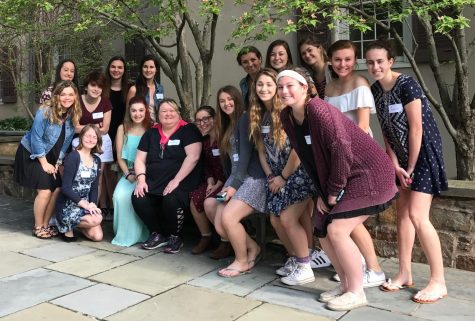What You Need To Know About Autism
May 21, 2019
Across the world, April is celebrated as National Autism Awareness Month. Proper education is essential before spreading awareness, in April or any other month; many may recognize the term “autism” without understanding what it means.
Autism Spectrum Disorder is defined by autism-society.org as a “complex developmental disability, typically appearing during childhood and affecting a person’s ability to communicate and interact with others.” In short, autism causes disability in developmental necessities and motor skills, such as speech, walking, writing, and many others.
Most cases of autism are obvious at an early age, with a child being unable to reach expected milestones. The most common sign that a child may be on the spectrum is if the child has not started talking by the age of two and does not respond to the child’s name being called.
According to the Centers for Disease Control and Protection, about 1 in every 59 children are diagnosed with autism by the time they are three years old. With such a common percentile range, society should be informed of the warning signs of and general information about the disorder. Yet, people of all ages still continue to spread the toxic stigmas and stereotypes that plague the reputation of those who have been diagnosed.
It is also important to mention that males tend to have the disorder more commonly than females; however, this does not exclude any female child from the possibility of diagnosis.
Like several other disorders, autism is represented by an awareness ribbon, but without the usual solid color. The official Autism Spectrum Disorder ribbon contains a puzzle pattern, consisting of four repeated colors: red, yellow, dark blue, and light blue. According to autism-society.org, the puzzle pieces represent the “complexity of the autism spectrum… and the diversity of the people and families living with the condition.”
Although many charities and foundations have an open mindset when it comes to support and awareness for the autism spectrum, one of the most recognized foundations do not appear to intend to help, but to cure.
On the outside, Autism Speaks, the most popular and influential autism foundation to date, seems like a charitable foundation that prides itself on helping those on the spectrum, but it intends to fund scientific studies to find a theoretical cure, making it seem like autism is a disease that can be treated. In reality, it cannot. Autism is a disorder, meaning there is no cure. However, there have been changes in the company as of 2016 that have brought positive attention to many against the organization. Autism Speaks officially removed the negative connotation they have given to Autism, such words being “crisis,” and “cure.” This new removal is accredited to the board voting to revise and rework their statement to represent a change in the company’s new and improved goal.
Although this new change has brightened the reputation and overall outlook of the company, there are still a few flaws that must be changed within the company, mostly through the funding and board directors. According to Debra Mukizar, a writer from The Art of Autism, Autism Speaks only spent 4% of their funds for the benefit of families who are affected by autism, through family service grants, while 96% of their funds went to benefit the company. A family service grant is money from a foundation to compensate for a family’s struggles with a certain issue, or in this case, a family member diagnosed with autism. For reference, this chart provided by The Art of Autism, presents the overwhelming amount of self-benefits Autism Speaks funds.

In addition, Autism Speaks, as of 2019, only has two autistic people in high authority. Most would assume that Autism Speaks would hire more people on the spectrum to represent the foundation and its beliefs, but in actuality, their board is made up of executives from large companies, such as Samsung, Goldman Sachs, Sirius Radio, among others.
April Dawn Griffin, a woman on the spectrum, commented this response about a question post about Autism Speaks on Facebook, (originally made by the Art of Autism): “Our pieces are not missing and we are not puzzles. There is lots of information on autism and plenty of adults talking typing singing painting dancing and communicating— we can speak —we are speaking but they do not listen. If they listened they would stop the eugenics in their agenda, advocating therapy enough autistics state is torture to warrant a discussion about if it is at all ethical – they use fear, and play on the stigma that needs to stop.”
Generally, those affected by the disorder agree that Autism Speaks should focus on embracing those on the spectrum, rather than shaming or curing them. There are hopes that, particularly with the appointment of two people with autism to the board, perhaps the organization’s direction will change.
Some alternate charities and foundations that are worth researching: The Organization of Autism Research (OAR), Art of Autism, Autism Society of America, alongside many other foundations.
Autism is a disorder that affects millions across the world. By empowering, spreading awareness, and raising money for those on the spectrum, collectively we can make a positive difference.





